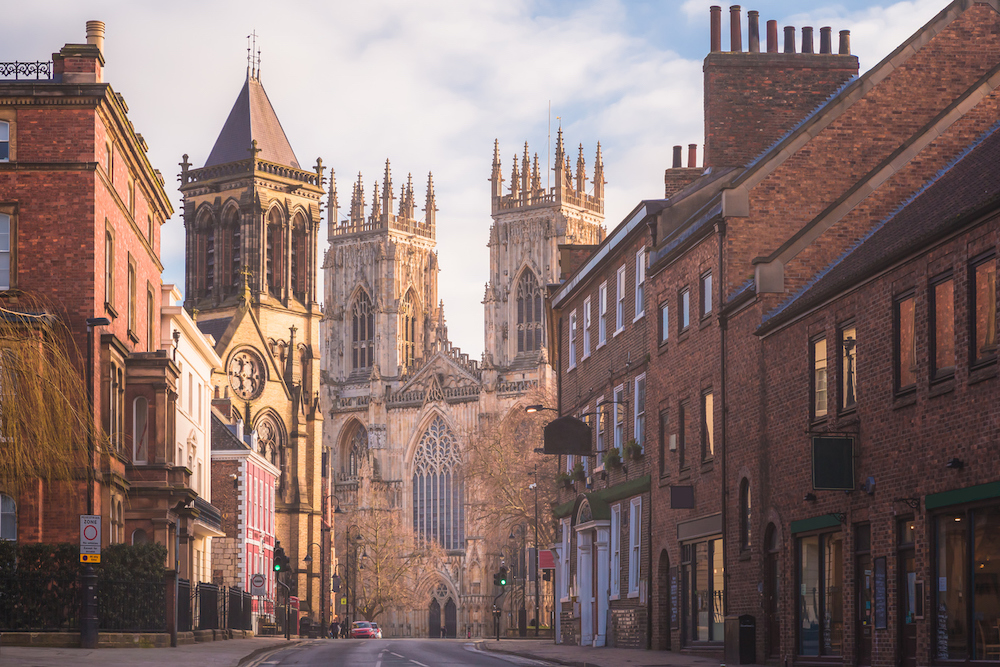The Unesco world heritage status award is a curious kind of international beauty contest in which historic locations vie to be anointed worthy of special recognition by a committee of UN cultural bigwigs. This supposedly brings with it some form of wider symbolic cultural validation through international acclaim. In fact what it really brings — indeed the only meaningful outcome — is mass tourism, often to the detriment of the winning locations as well as the people who live there. It is a mystery why anyone thinks this is something that requires obligatory celebration, no questions asked.
Why should anyone living in this great city, one of the great wonders of the world, care about being given Unesco heritage status?
The latest places to abase themselves in an effort to win this hollow international crown include York, which boasts its world-renowned Minster and medieval architecture. Why should anyone living in this great city, one of the great wonders of the world, care about being given Unesco heritage status? Other places on the list include three ancient settlements known as the ‘zenith of iron age Shetland’; Birkenhead Park in Merseyside, which is seen as a ground-breaking model of municipal development; and the East Atlantic Flyway, a migratory bird route over western parts of Europe taking in places such as Yorkshire, Essex and Kent. In all there are seven sites on the government’s ‘tentative list’ which is published roughly once every decade, setting out the locations with the best chance of winning. If successful, they would join the 33 other world heritage sites already based in the UK, including Stonehenge and Hadrian’s Wall. So what?
This bloated UN heritage jamboree is a far cry from its lofty and well-intentioned origins. Just over 50 years ago a number of countries came together to try to protect what they deemed the most important cultural and natural treasures. It culminated in the signing of the 1972 World Heritage Convention, the treaty that launched the World Heritage list of places that have ‘outstanding universal value’. There are now more than 1,100 world heritage sites, ranging from the Taj Mahal to the Galápagos Islands. Yet all is not quite what it seems. Being listed as a heritage location does not lead automatically to any special funding or protection, and it remains the responsibility of national governments to take care of the sites. Nor does Unesco have any special powers, legal or otherwise, to stop destruction or damage. In 2001 the Taliban demolished the world-famous Buddhas of Bamiyan. It is hard to believe that a heritage badge from the UN would have counted for anything when it came to this act of wanton cultural destruction.
Heritage sites can also be delisted if they fall foul of the diktats of the UN heritage police. Liverpool lost its special status in 2021 when Unesco ruled that years of development had led to an ‘irreversible loss’ to the historical value of its Victorian docks. The absurdity of such a judgement being passed down by a committee of faraway apparatchiks is plain enough. It is also simply undemocratic – any development in Liverpool is a decision for local voters and politicians – and much too high price to pay for a mere badge of approval.
The stark truth is that, under the auspices of Unesco, the whole world heritage business has become a Trojan horse for global tourism. National governments are happy enough to buy into it for their own cynical reasons: tourism contributes more than £100 billion to the British economy alone. All involved are happy to assert that tourism and heritage preservation go hand in hand, when that often isn’t the case. Nor should anyone fall for the claim that world heritage status is some wonderful transnational cultural project that helps bring together countries and their peoples. It is now much more about the politics and economics of global tourism than conservation. Beautiful places like York would do well to steer clear: it has more to lose than gain from being given a silly UN heritage badge.







Comments